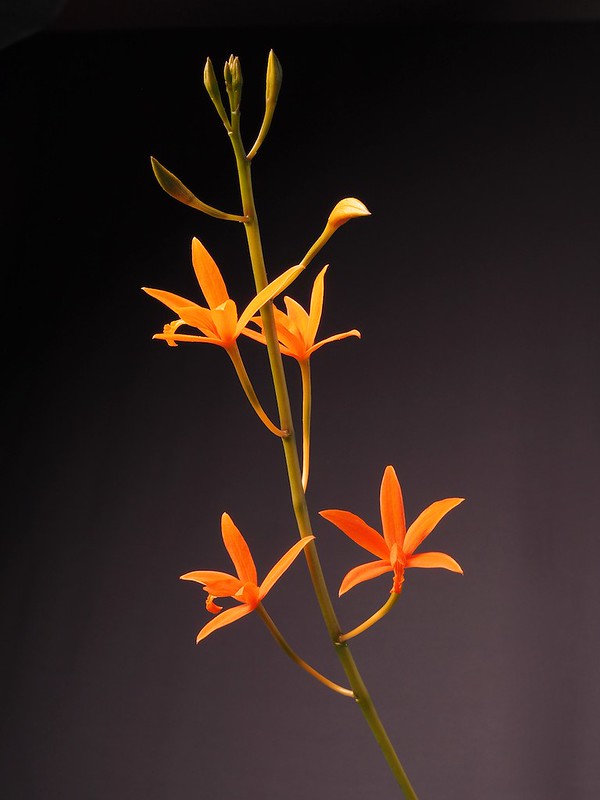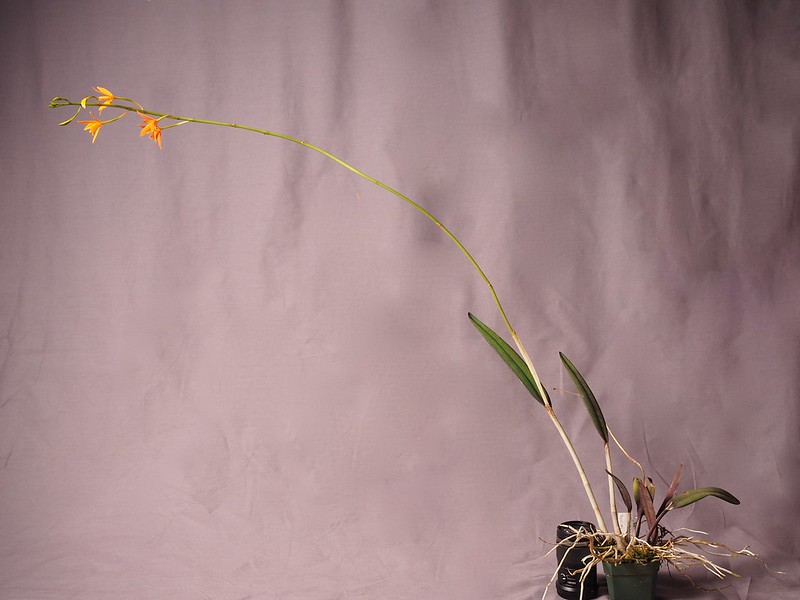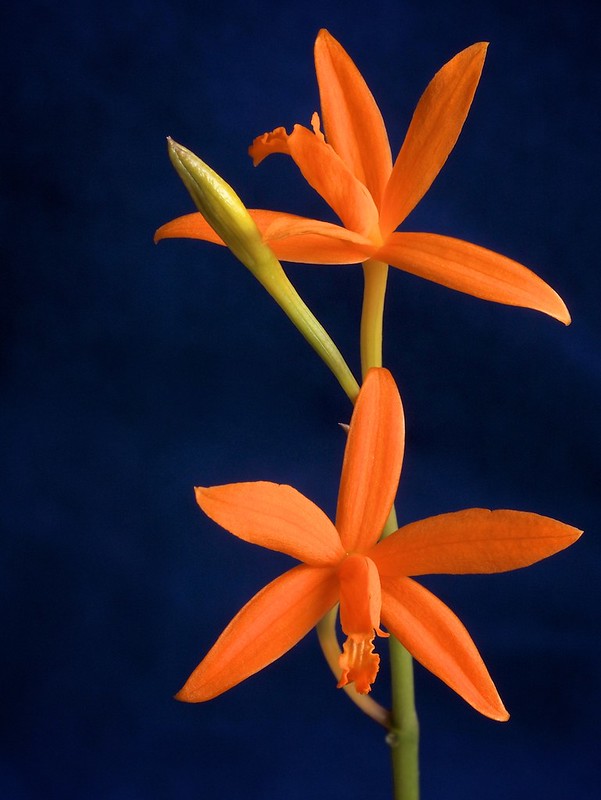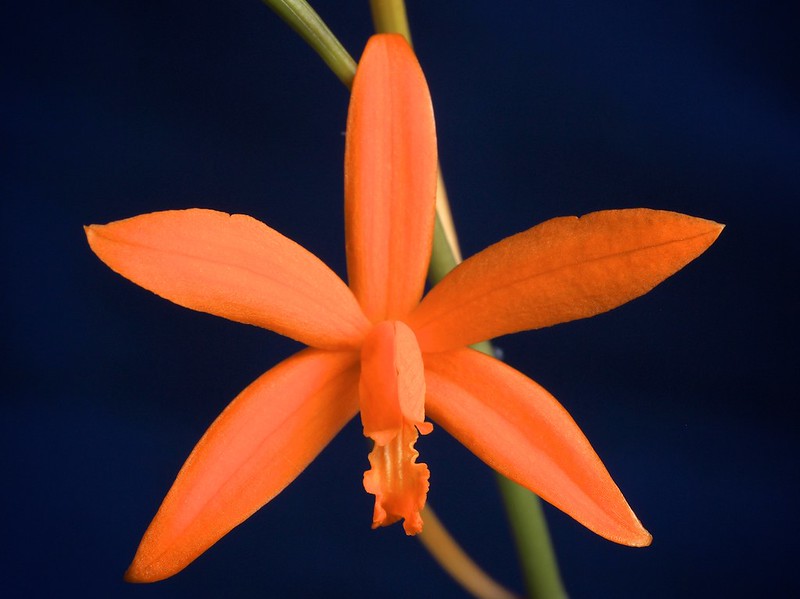
My friend, Mauro Rosim, told me that the identification of this plant is not correct. It is probably an undescribed species. I'm leaving the information about C. mirandae in this post, and I'll try to update the post when I learn more about this undescribed species.
Cattleya mirandae was described relatively recently (2005; IOSPE link). It was originally described as Hoffmannseggella mirandae (link to the photo of the original description). The genus name of this group has been bounced around quite a bit, and it could be confusing. After looking into the evidences presented by molecular phylogeny, I think that rumping them into Cattleya appears to be the least confusing treatment scientifically. Some hobbyists don't feel right about this, but we should evaluate the evidence under the principle of the Latin binomial system, where the genus name should represent the evolutionary relationships. This article by van den Berg is relatively easy to understand, and he explains the reason of this treatment.
I got this plant from Florália in May 2013. I haven't found enough information about the taxonomy of this group. I have a few species from this group, and the flowers look pretty similar although the growth habit etc. differs quite a bit.
The size of this species is at the large end within the rupicolous Cattleya (Laelia) group: the length of the largest pseudobulb is 19cm (7.5") with the leaf length of 19.7cm (7.75"). From the base of the leaf, the inflorescence is about 83.8cm (33"), which is carrying about 15 flowers. They flower sequentially from the bottom to the top, and 5 flowers are simultaneously open at this moment. It is a thin leaved rupicolous Cattleya.
The size of this species is at the large end within the rupicolous Cattleya (Laelia) group: the length of the largest pseudobulb is 19cm (7.5") with the leaf length of 19.7cm (7.75"). From the base of the leaf, the inflorescence is about 83.8cm (33"), which is carrying about 15 flowers. They flower sequentially from the bottom to the top, and 5 flowers are simultaneously open at this moment. It is a thin leaved rupicolous Cattleya.

In March 2014, (2 years ago), it was quite a bit smaller; the pseudobulb length was 6.4cm (2.5"), leaf length was 16.5cm (6.5"), and the inflorescence length was 33cm (13"). It was carrying only 5 flowers (it wasn't completely recovered from importation). The leaves were really purple at this time, but more recently, the top side became more greenish (the bottom of leaves are still purple). Note the color of flower in the photo below is too red.

The color came out a tiny bit too reddish in the following photo; the first photo of this post is more of the real color. Dorsal sepal length=2.8cm, Dorsal sepal width=0.6cm, Ovary length=4.0cm

The following photo is from 2014 of the same plant, which shows the lip better. The ovary has nice orange-yellow green orange-yellow pattern.


I'm growing it in a plastic pot, 10mm layer of small lava rock at the bottom, then 5mm of sphagnum moss layer, and small lava rock:sphag=1:1 as the main growing medium. I don't keep it too dry as suggested for rupicolous Cattleyas (Laelias). It's under LED (4000K XF-3535L) + florescent light (6500k, 800-1000fc, 13h/day) with no natural light, and it seems to grow/flower with relatively small amount of light. RH around 60-90%. Max/Min temperature is 29/20C (84/68F) in the summer, 21/13C (70/55F) in the winter.
Here is a link to a very interesting interview of Wladyslaw and Aleksandro Zaslawsky of AWZ Orchids. They talk about the habitat of this species and they showed the habitat photos.
Comments
Post a Comment